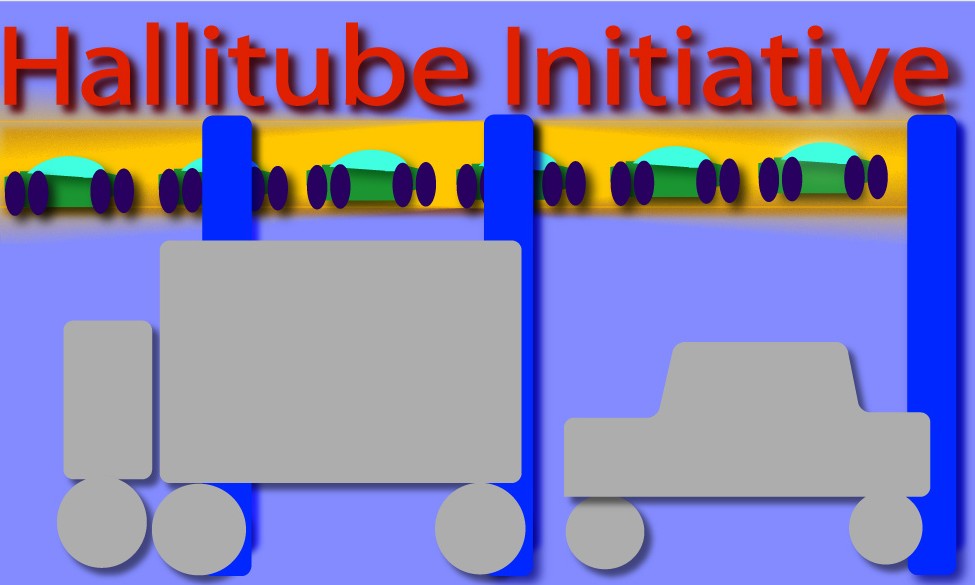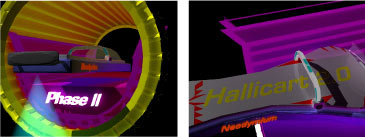

| Pinning Force: Hallitubes
as an Infrastructure for more advanced propulsion systems You have heard about linear drives, and the capacity of magnets to repel each other and thus let a vehicle hover. A German firm has built a maglev line between Shanghai and its airport, and there is one operating in Germany, and a small one near Aichi in Japan. Because we want Hallitubes to be adopted rapidly and to become profitable early, we have opted for a conventional design with high speed electric motors. Using maglev currently would increase the complexity and cost by many magnitudes. However, once the tube infrastructure is in place, it can be modified to run carts based on maglev. However, the stations will need to become automated, removal and placement of vehicles onto tracks will be robot based. You have probably played with repelling magnets, so the question looms in your mind, "They repel, but they also want to flip away from each other, i.e. they are not stable." Mitsubishi in Japan currently demonstrates the effect of a phenomenon called "pinning force" on repelling superconducting magnets. They demonstrate that such magnets repel each other stably, i.e. sit on top of each other and are actually hard to push out of the field. For this reason, a cart using this principle would be quite stable without banging into the wall of the tube during turns. If two large cake box sized superconducting magnets are placed on top of each other, you have to press on them sideways quite a bit to cause them to disentangle. The designs you see above are open air carts for experimentation, actual carts would be covered. Futurama, the Fox television show has tubes through which humans float. A large enough superconducting magnet could center humans in a tube, but the physiological effects are not clear, and the thickness of the tube with current materials would be gigantic and unaffordable. Nevertheless, if a breakthrough in superconductance happens we have a tube system in place - for use without carts ! |